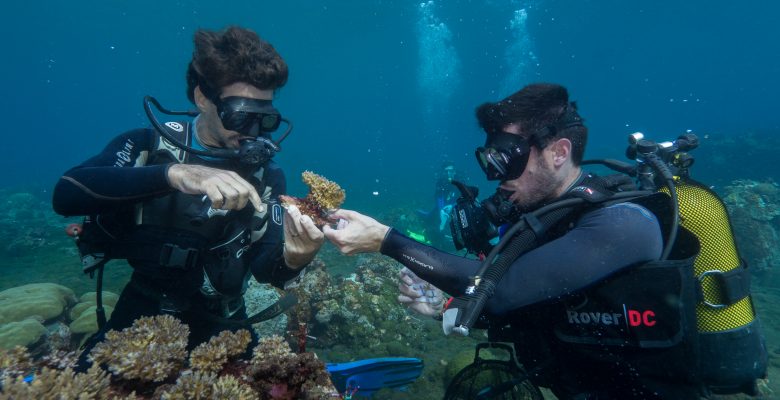On this Pacific island, sixty species of coral survive in an unfavourable environment: warmer, highly acidic water with less oxygen. While it was previously thought that corals would not be able to withstand such a hostile environment, they have managed to adapt. According to the results of an initial study carried out on site, calcification is the main parameter involved in this acclimatisation.
written by Marion Durand
The Bouraké site in New Caledonia is currently the focus of the main threats to the oceans in the context of global warming: a temperature rise of 2 or 3 degrees, much higher levels of acidity and under-oxygenated water. However, in this part of the lagoon, 90 kilometres from Noumea (the capital), super corals are resisting and thriving in this hostile environment.
The discovery was made by Riccardo Rodolfo-Metalpa, a researcher at the IRD (French National Research Institute for Sustainable Developement) and member of the Tropical Marine Ecology Laboratory of the Pacific and Indian Oceans (ENTROPIE) in New Caledonia. “I’d never seen anything like what I discovered at Bouraké”, he explains. “The corals are surviving even more extreme conditions than those I discovered previously in Papua New Guinea when I was working on CO2 volcanic resurgence”.
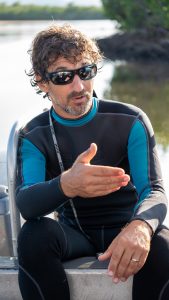
Riccardo Rodolfo-Metalpa © J-M Boré / IRD
This site, the only one of its kind in the world, is located in the mangrove swamp, a forest composed mainly of mangrove trees living between land and sea, found along coasts and estuaries. Water from the lagoon enters the mangrove during the rising tide, circulates within the system and then exits during the falling tide. This phenomenon causes the depth of the site to vary by around one metre.
« At low tide, the seawater becomes more acidic and depleted of oxygen as the system begins to drain,” describes the Italian scientist. At each high tide, water from the lagoon enters through the channel into the wide internal basin inside the mangrove. During this journey, this water mixes with more acidic, warm and deoxygenated seawater. So even at high tide, the water in the system never returns to normal values ».
Greater calcification
The researchers measured variations in pH at the Caledonian site. The lower the level, the more acidic the water. The maximum values recorded at Bouraké are around 7.9. At low tide, the pH even reaches the extreme value of 7.3 near the corals. These figures are well below those currently recorded: the normal pH of the ocean is 8.05. It is predicted to fall to 7.7 by 2100: “These levels show that these organisms have adapted to survive in very acidic waters”.
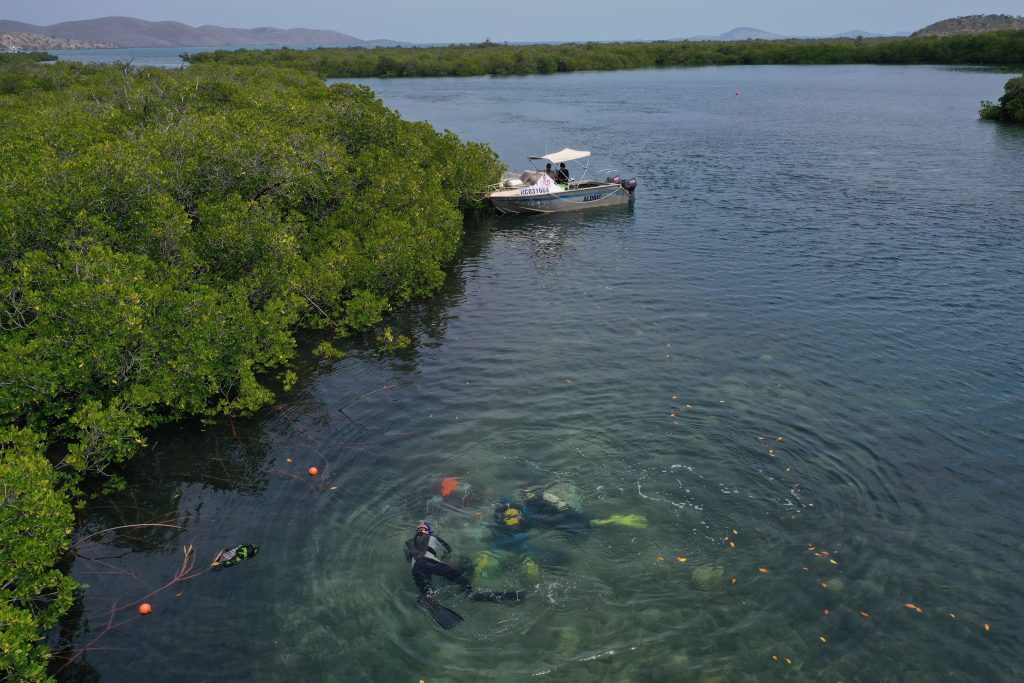
The Bouraké site in New Caledonia © Riccardo Rodolfo-Metalpa / IRD
The researcher noted a low oxygen concentration, down to 2 mg/L, whereas the normal concentration along the coast is 4 to 6 mg/L. To understand this surreal phenomenon, Riccardo Rodolfo-Metalpa and Clément Tanvet, a doctoral student in marine ecology at the University of Brest, compared the corals in the semi-enclosed Bouraké lagoon with corals adapted to a more stable seawater pH. They examined the physiological response and genetic diversity of Symbiodiniaceae (unicellular microalgae) associated with corals.
The results, published in the journal Ecology and Evolution, show that calcification (the formation of a calcareous skeleton) is the main parameter involved in this adaptation. “The three species of coral at Bouraké consistently showed higher growth rates than those living in the stable pH environment. They therefore appear to have a better ability to calcify at reduced pH. This superior performance coincided with more homogeneous algal communities for the Bouraké corals”.
« Corals won’t have time to adapt »
This study offers new perspectives and contradicts some of the existing scientific literature: “It was thought that ocean acidification would reduce coral calcification”. Although not immune to acidification, New Caledonian corals have, on the contrary, developed mechanisms to cope with it. But time remains the key factor in this adaptation. These super-corals have been exposed to these extreme conditions for a very long time. The same species sampled outside the inlet did not have time to change their metabolism to acclimatise when confronted with this unfavourable environment.
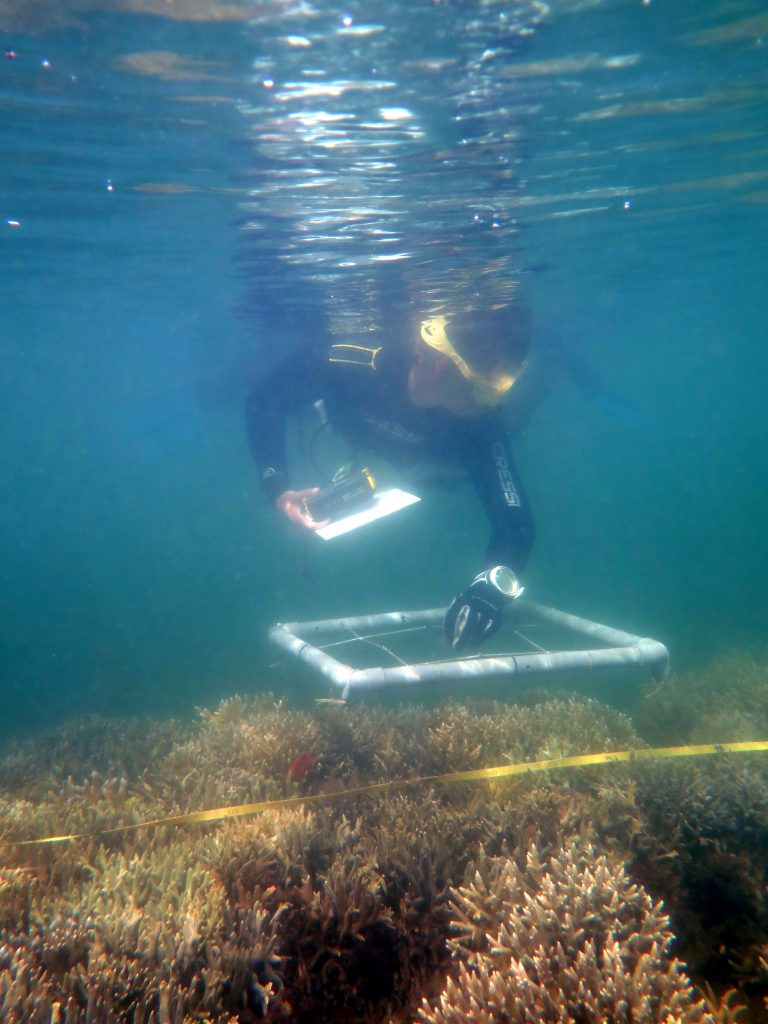
Diving into the heart of the Bouraké site© Riccardo Rodolfo-Metalpa
One question remains unanswered: how long did it take the corals living in the Caledonian mangroves to adapt? “Did they acquire defence mechanisms over hundreds of years, dozens of years or more quickly,” asks Riccardo Rodolfo-Metalpa. Behind this unanswered question lies the future of coral reefs. “If this adaptation is rapid and a physiological change enables the coral to resist, there is hope“. But the researcher is less optimistic, pointing out that several reproductive cycles are needed to modify the resilience of corals, whereas a larva needs five to seven years to become an adult. “Global warming is going so fast that corals won’t have time to adapt, and coral reefs as we know them today will be decimated.
The Bouraké site, discovered in 2016, is an exceptional natural laboratory, as these coral reefs are already exposed to the environmental conditions expected by the end of the century.
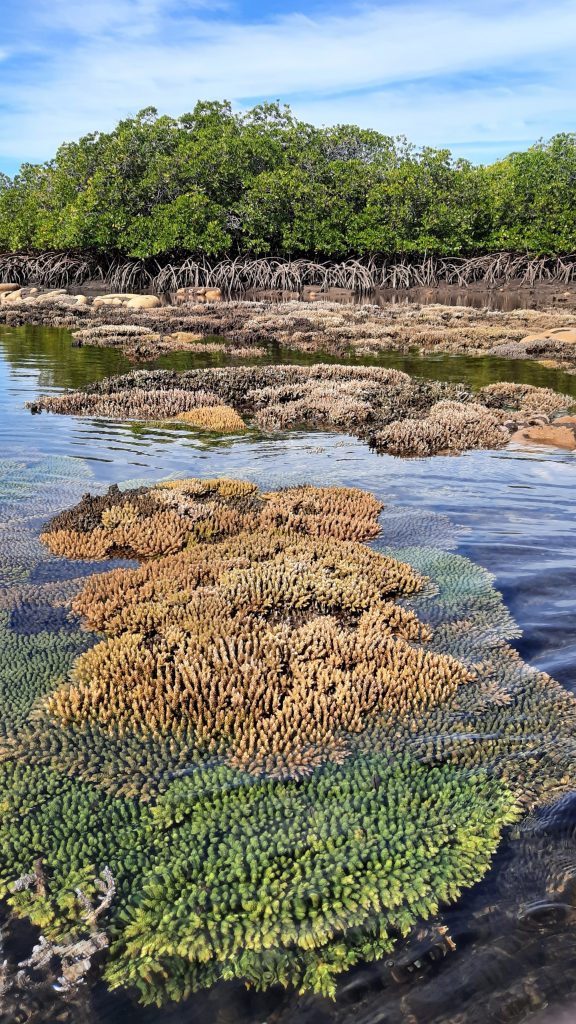
The Bouraké site, New Caledonia © Riccardo Rodolfo-Metalpa
Scientists from all over the world travel to the Pacific island to observe this phenomenon. “People fall in love with this rich ecosystem, where corals, fish, organic matter and sediments live together in a hostile environment”.
Riccardo Rodolfo-Metalpa is continuing to study these super corals. Although funding is scarce, he hopes to carry out genetic analyses on the different species and study all the micro-organisms living in this particular environment.
